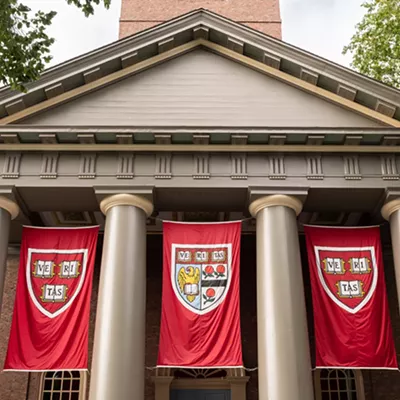"It's a huge threat to the beekeeping industry," says Eric Olson, vice president of the Washington State Beekeepers Association and owner of a large commercial pollination service. "If we don't corral this thing and get it stopped, by next year we may not have any bees. That's how fast it works." Olson says he's lost 4,000 hives to the pestilent pathogen since January, and that other commercial beekeepers in Western Washington are reporting a similar rate of loss. But while the die-off seems to be concentrated on the west side, colonies across the state are off 35 to 50 percent, the Seattle Times reports.
Honeybees pollinate an estimated one third of our diet, according to Steve Shepherd, a researcher at WSU. Many of the most profitable crops in Washington -- from apples to cranberries -- are pollinated by honeybees.
Funded in large part by private donations from beekeepers and the growers who depend on them, Shepherd has begun a regional "colony health survey." Numerous factors can cause the health of a colony to deteriorate, he says, including infestation by parasitic mites. The culprit that killed Olson's bees is nosema ceranae -- a microsporidian that spawns within its host's gut. Nosema apis, a close relative, typically causes problems in the winter when bees don't leave their hives. The new, variant strain -- which Shepherd says was identified only last year (although frozen specimens suggest that it's been in the U.S. since 1995) -- continues to be a lethal problem even when the weather warms up.
"In Europe, it's been responsible for many thousands of colonies dying," Shepherd says. "The idea of this colony health survey is to look at samples around the state and get an idea of the distribution of these various problems."
In 2006, beekeepers around the country began reporting a high rate of dwindling or abandoned colonies -- a largely unexplained phenomenon that came to be called "colony collapse disorder." No single cause has been identified. Shepherd says it could be pathogens, starvation, the use of pesticides, stress from transportation or any combination thereof. Anything that shortens the lifespan of the bees might not leave enough workers in the colony to tend to the brood of larvae, and the colony peters out. Nationally, many commercial beekeepers reported losing between 25 percent and 40 percent of their insects in 2007. The epidemic in Western Washington this year doesn't appear to be the same phenomenon, according to Shepherd.
Olson doesn't haggle over terminology, however. "Whatever it is, the bees are just as dead," he says, "whether you call it 'colony collapse disorder' or something else.
"I fear that Western Washington will be the first place in the nation that does not have bees for pollination," he says. "It's a big problem. I've told the growers that if I don't find an answer, I cannot continue to live with 80 percent losses. I'll have to get out of there."
mick@inlander.com















